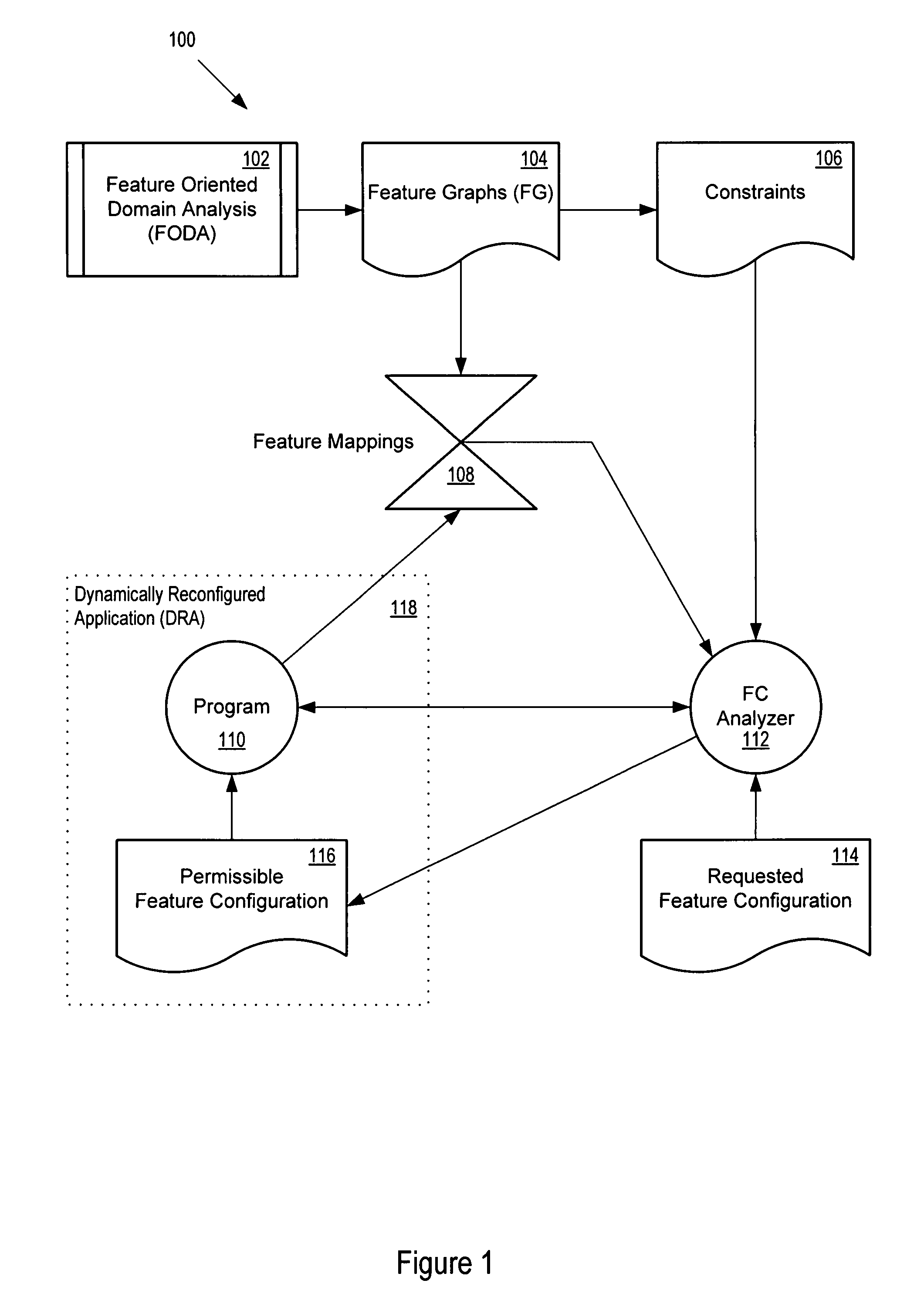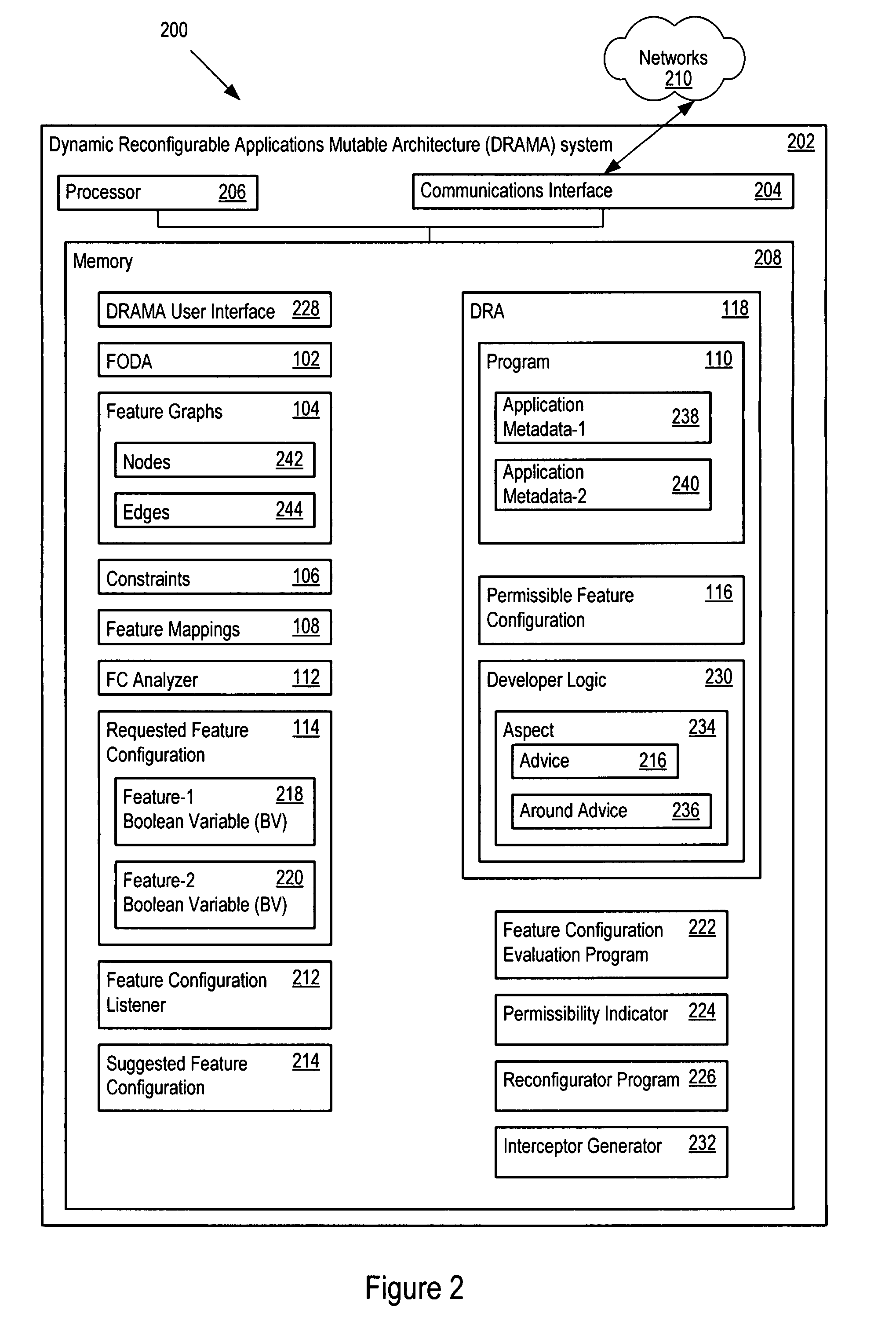Refactoring monolithic applications into dynamically reconfigurable applications
a technology of dynamic reconfigurability and application, applied in the field of refactoring monolithic applications into dynamic reconfigurable applications, can solve the problems of commercial-strength large-scale software systems, economic infeasibility of shipping a different version, and quick and compl
- Summary
- Abstract
- Description
- Claims
- Application Information
AI Technical Summary
Benefits of technology
Problems solved by technology
Method used
Image
Examples
Embodiment Construction
[0030]DRAMA addresses the problem of retrofitting dynamic reconfigurability into legacy applications efficiently and correctly. Organizations currently spend considerable time and money on reengineering legacy applications to make them dynamically reconfigurable. DRAMA provides a lightweight mechanism to decouple tightly coupled services in monolithic legacy applications to produce DRAs, while preserving application constraints. DRAMA simplifies application renewal projects, allowing companies to continue to use legacy assets in new system architectures.
[0031]DRAMA allows developers to consider each DRA configuration one product of a product-line-architecture (PLA). A product-line-architecture (PLA) possesses all the variations of a set of closely-related products (e.g., applications), and involves modelling commonalities as well as the variability that between products. Similarly, DRA products are built from a common set of services and share a common architecture. A monolithic app...
PUM
 Login to View More
Login to View More Abstract
Description
Claims
Application Information
 Login to View More
Login to View More - R&D
- Intellectual Property
- Life Sciences
- Materials
- Tech Scout
- Unparalleled Data Quality
- Higher Quality Content
- 60% Fewer Hallucinations
Browse by: Latest US Patents, China's latest patents, Technical Efficacy Thesaurus, Application Domain, Technology Topic, Popular Technical Reports.
© 2025 PatSnap. All rights reserved.Legal|Privacy policy|Modern Slavery Act Transparency Statement|Sitemap|About US| Contact US: help@patsnap.com



